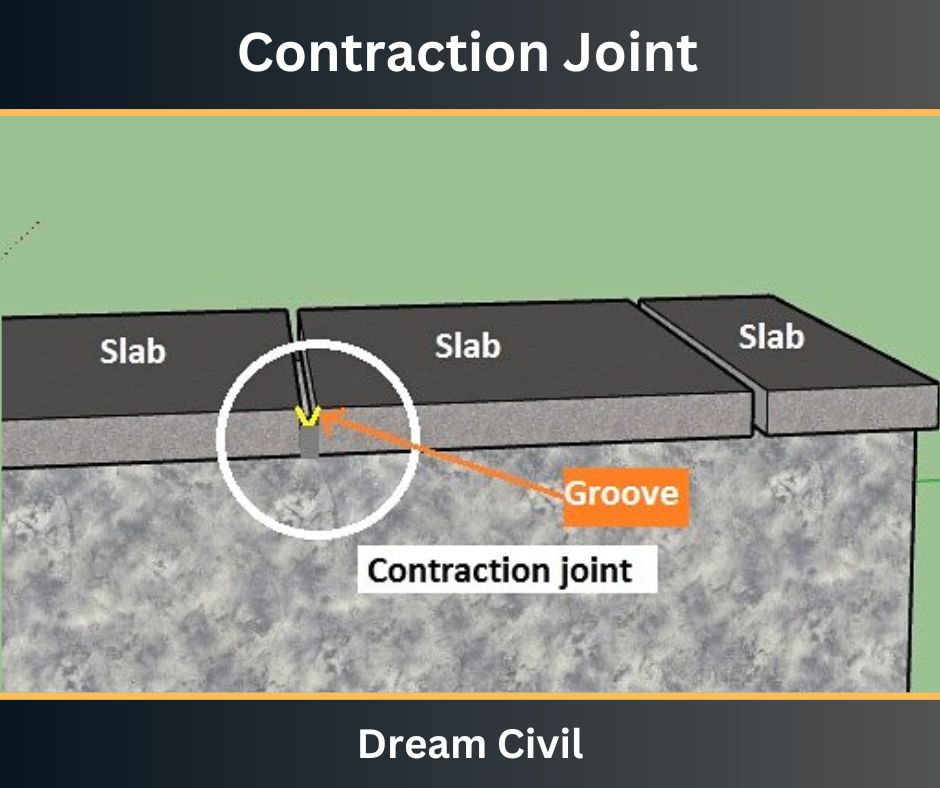Table of Contents
When the volume changes due to change in temperature and moisture, this change in volume should be accounted for in the design of the reinforced concrete building.
Joints in Building Construction are kept in concrete to allow them to move freely and prevent cracking.

2. Necessity of Joints
a. Joint allows movement to prevent stress buildup.
b. To minimize any desirable cracking.
c. To improve the performance of the structure material and allow the materials to expand/contract freely.
d. To provide natural planes of weakness and prevent any desirable bending to adjacent elements.
e. It separates the structure into smaller units.
3. Types of Joints
There are four types of joints that are as follows:
a. Construction Joints
b. Expansion Joints
c. Contraction Joints
d. Isolation Joints
a. Construction Joints
i. It is used where multiple concrete placements have to be done.
ii. These joints are kept where the process of concrete pouring has been stopped.
iii. Construction joints are essential because it is impractical to place concrete in a continuous operation, except for very small structures.
iv. Construction joints may be run horizontally or vertically depending on the placing sequence prescribed by the design of the structure.
v. Construction joint should be located along or near the plane of maximum shear.
b. Expansion Joint
The expansion joint depends upon the context of the change in temperature.
These joints are provided when the length of the building is greater than 30m and temperature changes by 50°C then a 10 mm expansion joint is provided.
The extent of the structure on the coefficient of linear expansion of the material.
In 3414-1908, spacing of expansion joints in the various elements of the structure.
Load Bearing Wall- 30 m
Framed Structure Building= 30-45 m
Ordinary roof slab of RCC= 20-30 m
An expansion joint should be provided at the point where the structure change direction.

Materials used in Expansion Joints
i. Joint Filler:
Bitumen containing cellular material, rubber, thermocouple expanded plastic, mineral fiber, and glass wool. The joint Filler should be compressible material tightly fitted in the gap. It should regain 75% of its original thickness when external pressure is removed from it.
ii. Sealing Compound:
Its role is to pack, the joint against the passage of moisture and to control the ingress of dust grit, or other matter to the joint.
Mastic or hot bitumen and silicon are mainly employed as sealing compounds.
iii. Water Bar:
The function of the water bar is to seal the joint against the passage of water. The water bar may be made up of rubber, GI sheet, Copper, and aluminum.
c. Contraction Joint
Contraction joints are provided to allow for shrinkage movement in the structure. The contraction joint may be
1. Complete Contraction Joint
2. Partial Contraction Joint
3. Dummy Contraction Joint

Cracking of concrete due to shrinkage can be prevented by;
a. Proper curing
b. Provision of proper adequate reinforcement bar
c. Restricting length.
The amount of shrinkage during setting depends upon the water-cement ratio.
When the water-cement ratio is 0.3, shrinkage is 1.5 mm.
When the water-cement ratio is 0.5, shrinkage is 4.2 mm.
When the water-cement ratio is 0.7, shrinkage is 8 mm.
d. Isolation Joint
These joints permit the vertical movement of building units without causing damage to the structure.
This was for the Joints in Building Construction.

5. References1. Content Filter & Authenticity Checking Team, Dream Civil International (Our team checks every content & detail to maintain quality.) |
| Read Also: Best Cement in India |
